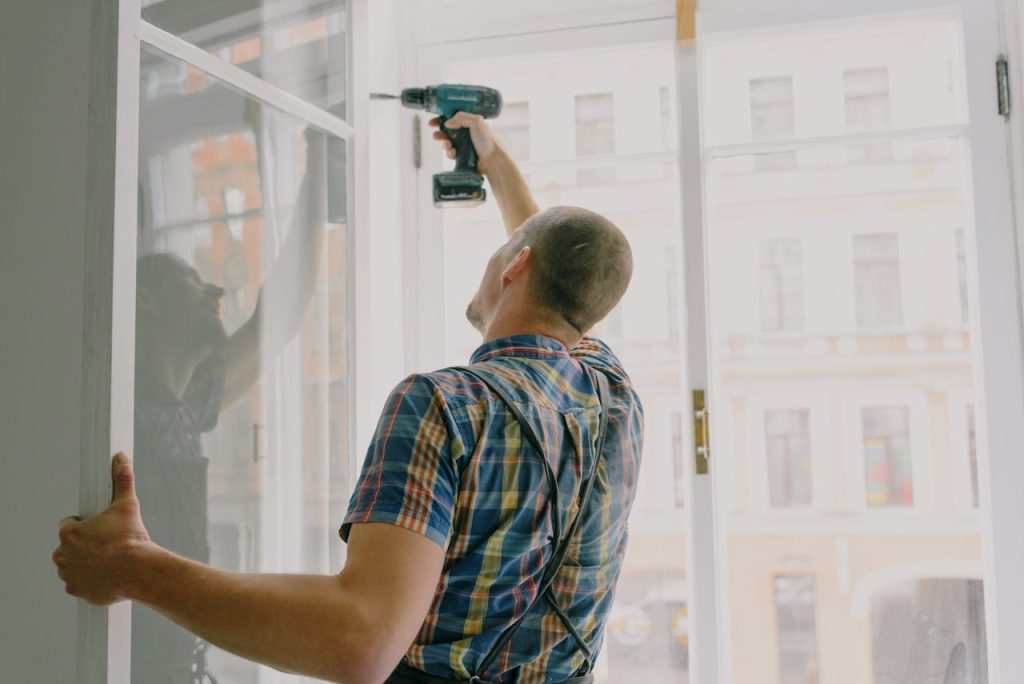
Tackling home repairs yourself can be empowering and cost-effective, but not every project is as simple as it seems. Many homeowners dive into DIY fixes without realizing that some repairs could actually violate local building codes. These codes exist to keep you, your family, and your neighbors safe, and ignoring them can lead to fines, failed inspections, or even insurance headaches. Whether you’re planning to sell your home or just want peace of mind, understanding the risks of DIY work is crucial. Before you pick up that hammer or paintbrush, let’s explore some common fixes that might land you in hot water with your local building department.
1. Electrical Work Without a Permit
It’s tempting to swap out a light fixture or add an outlet on your own, but electrical work is one of the most heavily regulated areas in local building codes. Even seemingly minor changes can create fire hazards or shock risks if not done correctly. Many municipalities require permits for any electrical modifications, and unpermitted work can void your homeowner’s insurance. If you’re not a licensed electrician, it’s best to check with your local building office before making any changes.
2. Removing or Modifying Load-Bearing Walls
Open concept living spaces are all the rage, but knocking down a wall isn’t as simple as swinging a sledgehammer. Load-bearing walls support the structure of your home, and removing or altering them without proper planning can compromise the entire building. Local building codes require permits and inspections for this type of work to ensure your home remains safe and stable. If you’re unsure whether a wall is load bearing, consult a structural engineer or your local building department before making any changes.
3. Plumbing Changes and Bathroom Remodels
Replacing a faucet or showerhead is usually safe, but rerouting pipes or installing new plumbing fixtures often requires a permit. Local building codes are strict about plumbing to prevent leaks, water damage, and contamination. DIY plumbing mistakes can lead to costly repairs and even health hazards if wastewater mixes with clean water. Always check your city’s requirements before starting a bathroom or kitchen remodel.
4. Installing New Windows or Doors
Upgrading your windows or doors can improve energy efficiency and curb appeal, but improper installation can violate local building codes. Codes often specify the type of glass, egress requirements for bedrooms, and even the placement of locks and latches. Failing to follow these rules can affect your home’s safety in emergencies and may cause problems during a home sale. Always research your area’s requirements or hire a professional for major window and door projects.
5. Building Decks or Outdoor Structures
A new deck or shed can transform your backyard, but these projects almost always require permits and must meet local building codes. Codes cover everything from the depth of footings to railing heights and stair construction. Failing to obtain permits or disregarding code requirements can result in fines or the forced removal of the structure. Before you begin building, contact your local building office to determine the requirements for your project.
6. Finishing Basements Without Egress
Converting your basement into a living space is a popular DIY project, but local building codes require proper egress—meaning a safe way to exit in the event of a fire. This usually means installing windows or doors that meet specific size and accessibility standards. Without proper egress, your finished basement may not be considered a legal living space, which can affect your home’s value and safety. Always include egress in your basement plans and get the necessary permits.
7. Adding or Modifying HVAC Systems
Installing a new furnace, air conditioner, or even a vent might seem straightforward, but HVAC work is closely regulated by local building codes. Improper installation can lead to carbon monoxide leaks, poor air quality, or fire hazards. Permits and inspections ensure that your system is safe and efficient. If you’re not a licensed HVAC technician, it’s wise to leave these projects to the pros or at least consult your local building department before starting.
8. Roofing Repairs and Replacements
Replacing a few shingles might not raise eyebrows, but full roof replacements or structural repairs often require permits. Local building codes dictate materials, installation methods, and even ventilation requirements. Unpermitted roofing work can lead to insurance issues and problems when selling your home. Always check with your city or county before starting major roofing projects.
Why Following Local Building Codes Protects Your Investment
DIY projects can be rewarding, but cutting corners or skipping permits can have serious consequences. Local building codes aren’t just bureaucratic red tape—they’re designed to protect your safety, your investment, and your community. Violating these codes can lead to fines, insurance problems, and even legal action. Before starting any major home improvement, take the time to research your local building codes, pull the necessary permits, and consider consulting a professional. It’s a small step that can save you big headaches down the road.
Have you ever run into trouble with a DIY project and local building codes? Share your story or tips in the comments below!
Read More
The Definition of Irony, or Why You Should Know What You’re Doing
Is Disability Insurance Optional? I Think Not – Our Boner of the Week
The post DIY Fixes That Could Be Violating Local Building Codes appeared first on The Free Financial Advisor.







